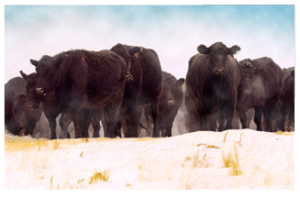December 2018 Newsletter
Click here to view as a pdf: 2018 December Newsletter
Shop online or call 1-888-376-6777 to place an order. ![]()
Click here to view as a pdf: 2018 December Newsletter
 Dr. Ryan Leiterman will be speaking at the North Central Ohio Dairy Grazing Conference, Thursday, January 24th and Friday, January 25th in Mt. Hope, Ohio. Dr. Leiterman will be discussing transition cow management techniques on Thursday afternoon and tips for achieving more profitability with your dairy operation on Friday, January 25th. The conference is organized by the Small Farm Institute and the Conference fee includes Registration, Breaks/Vendor Show, Meals and Networking. This is an excellent opportunity to meet and learn with industry professionals and fellow grazing advocates.
Dr. Ryan Leiterman will be speaking at the North Central Ohio Dairy Grazing Conference, Thursday, January 24th and Friday, January 25th in Mt. Hope, Ohio. Dr. Leiterman will be discussing transition cow management techniques on Thursday afternoon and tips for achieving more profitability with your dairy operation on Friday, January 25th. The conference is organized by the Small Farm Institute and the Conference fee includes Registration, Breaks/Vendor Show, Meals and Networking. This is an excellent opportunity to meet and learn with industry professionals and fellow grazing advocates.
Click here to view as a pdf: Ventilating A Retrofitted Stanchion Barn For Calves
By Jessica Getschel, B.S.
There’s nothing more picturesque than a dairy farm with a big red barn on a cobblestone foundation. Many of these barns, referred to as stanchion, tiestall or bank barns, were built decades ago and tell stories of families who have been dairy farming for generations.
Over the years, many farmers have moved out of these older barns and into modern freestall barns for a variety of reasons: expanding herd size, new cow comfort recommendations or a new milking system, to name a few. This departure leaves a vacant building prized for its emotional value to the farm.
Click here to view as a pdf: Recognizing The Need For Disinfection In Your Poultry Operation
By Stephanie Hutsko, PhD
Why do we need to have a disinfection plan in place when working with livestock, especially poultry? One word: pathogens.
Pathogens are bacteria or viruses that, when exposure levels are high enough, can cause disease. When bacteria are left uncontrolled, their numbers grow quickly, wreaking havoc on the birds exposed to them. A common parasite associated with poultry, Eimeria sp, can lead to coccidiosis. Common bacteria associated with poultry include Salmonella and E. coli, both of which can lead to food safety concerns. The main poultry viruses we are concerned about are Newcastle disease, Marek’s disease and Avian Influenza.
Click here to view as a pdf: Cold Weather Poultry Considerations
With winter just around the corner, Crystal Creek® wants to make sure that you and your chickens are prepared. Here are some tips and tricks to ensure that your birds make it through the upcoming cold season with “flying colors”.
Click here to view as a pdf: Pregnancy Toxemia In Goats
By Teresa Marker, B.S.
Farmers consistently look for ways to be more efficient with time, money and resources. Hidden profit thieves in dairy operations can have a tremendous impact on a farmer’s bottom line. One hidden profit thief in dairy goat operations is pregnancy toxemia. This metabolic disorder is present in approximately 13% of does and has a herd prevalence of over 87%.1
Click here to view as a pdf: Ask The Vet Ask The Nutritionist

“There are times we need to drench our calves or adult cows but no one on the farm is comfortable performing this procedure. Are there any tips that could help us?”
-Unsure in Iowa-
There are many reasons for having to administer a liquid by mouth into the rumen or abomasum of an animal. Supplying the correct quantity of colostrum to calves or giving an electrolyte solution for rehydration are a couple common examples. Making sure that drenching is being performed correctly on your farm is crucial, as incorrect drenching can cause aspiration of fluids into the lungs leading to pneumonia, choking and even death. Training livestock handlers on the procedure will help set up your operation for success. Drenching requires skill, knowledge, strength, patience and the right tools for the job.
Click here to view as a pdf: Winter Tips For Livestock
 With winter fast approaching, it is time to prepare your livestock for the upcoming cold season. The following tips can help maximize the performance of your animals this winter:
With winter fast approaching, it is time to prepare your livestock for the upcoming cold season. The following tips can help maximize the performance of your animals this winter:
The main goal of feeding in the winter is to maintain body condition and, in pregnant animals, provide adequate nutrition for the growing fetus. Cattle require 1% more energy from their diet for every degree that is below their (environmental) critical temperature.1 For beef cattle with a heavy, dry, winter coat, their (environmental) critical temperature is 19˚ F. The chart below demonstrates the relationship between temperature and energy needs.
 Click here to view as a pdf: Cost Vs Value Why Cheaper Is Not Always Better
Click here to view as a pdf: Cost Vs Value Why Cheaper Is Not Always Better
By Erik Brettingen, B.S.
With the large selection of products available to the farming community, knowing what is needed, what isn’t, and which product to buy can be difficult to sort out. Cost often plays a role in making the selection between different products and services. While cost is important to consider, looking at a product’s value is a wiser approach to efficient decision making.
Click here to view as a pdf: Calves Cold Weather And Calories
 By Alex Austin, B.S.
By Alex Austin, B.S.
It’s no secret that calves can be more prone to health issues when temperatures decrease. We know that proper bedding, calf jackets and avoiding drafts are all important in keeping calves warm in the winter. An often overlooked solution is providing the calf with additional calories.